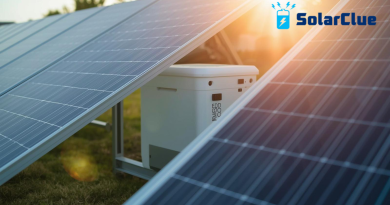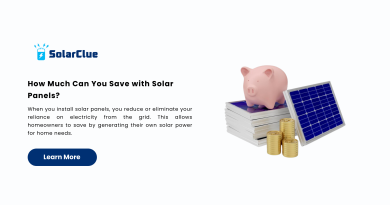What Is Solar Panel Yield?
Solar panel yield refers to the amount of electricity generated by a solar energy system over a specific period. Understanding the factors that influence solar panel yield is crucial for maximizing energy production and ensuring that your solar investment meets your energy needs. This guide covers everything from the basics of panel wattage to advanced calculations for estimating energy generation across different seasons and locations.
Table of Contents
- 0.1 1. Understanding Solar Panel Wattage and Energy Production
- 0.2 2. Factors Affecting Solar Energy Output
- 0.3 3. Calculating Energy Generation Based on Peak Sun Hours
- 0.4 4. Estimating Electricity Production for Different Seasons
- 0.5 5. The Role of Energy Storage in Maximizing Solar Utilization
- 0.6 6. Comparing System Output to Average Household Consumption
- 0.7 7. Tools and Software for Estimating Solar Energy Generation
- 0.8 8. The Impact of Panel Orientation and Tilt on Energy Production
- 0.9 9. Real-World Factors Affecting Solar Panel Performance
- 0.10 10. Optimizing Solar Panel Systems for Maximum Energy Yield
- 1 FAQs About Solar Panel Yield
- 2 Table: Factors Influencing Solar Panel Yield
1. Understanding Solar Panel Wattage and Energy Production
The wattage of a solar panel is a key determinant of its energy production:
- Panel Wattage: This is the amount of power a solar panel can produce under standard test conditions (STC), usually measured in watts (W). Common residential panels range from 250W to 400W.
- Energy Production: Energy production is measured in kilowatt-hours (kWh). To calculate it, multiply the panel wattage by the number of hours the panel is exposed to sunlight. For example, a 300W panel exposed to 5 hours of sunlight would produce 1.5 kWh (300W x 5h = 1500Wh = 1.5kWh).
2. Factors Affecting Solar Energy Output
Several factors influence the amount of energy your solar panels produce:
- Sunlight Intensity: The more intense the sunlight, the more electricity your panels will generate. This intensity varies throughout the day and across seasons.
- Temperature: Solar panels are less efficient at higher temperatures. Most panels operate best at 25°C (77°F), and performance can drop as temperatures rise.
- Shading: Even partial shading can significantly reduce energy output. Identifying and mitigating shading is essential for optimal performance.
- Location: Geographic location affects the amount of sunlight available. Areas closer to the equator receive more consistent sunlight throughout the year.
- Weather Conditions: Cloud cover, snow, and rain can reduce sunlight exposure, leading to lower energy production.
3. Calculating Energy Generation Based on Peak Sun Hours
Peak sun hours are a crucial metric for estimating solar energy production:
- Definition: A peak sun hour is an hour during which the sunlight intensity reaches an average of 1,000 watts per square meter (W/m²).
- Calculation: To estimate daily energy production, multiply the total wattage of your solar system by the number of peak sun hours. For example, a 5 kW system in an area receiving 4 peak sun hours per day would generate 20 kWh per day (5 kW x 4h = 20 kWh).
4. Estimating Electricity Production for Different Seasons
Solar energy production varies by season due to changes in sunlight hours and intensity:
- Summer: Longer days and higher sun angles result in increased energy production. In some regions, summer can produce 50% more energy than winter.
- Winter: Shorter days and lower sun angles reduce energy production. Additionally, snow cover can further decrease output by blocking sunlight.
- Example: In a location with 5 peak sun hours in summer and 3 in winter, a 6 kW system would produce about 30 kWh per day in summer and 18 kWh per day in winter.
5. The Role of Energy Storage in Maximizing Solar Utilization
Energy storage systems, such as batteries, play a vital role in optimizing solar panel yield:
- Storage Benefits: Batteries store excess energy produced during the day for use at night or during periods of low sunlight. This maximizes the use of solar energy and reduces reliance on the grid.
- Sizing the Battery: To size a battery, consider your energy consumption patterns and the amount of excess energy your panels produce. For instance, if your system produces 10 kWh more than you consume during the day, a 10 kWh battery would store that energy for later use.
6. Comparing System Output to Average Household Consumption
Understanding how your solar system’s output compares to your household energy needs is essential:
- Average Consumption: The average household in the U.S. consumes about 30 kWh per day. If your solar system produces 20 kWh per day, it would cover approximately 67% of your daily energy needs.
- Sizing Your System: To meet 100% of your energy needs, size your solar system based on your average daily consumption and the number of peak sun hours in your location. For example, if your home uses 30 kWh per day and you receive 5 peak sun hours, you would need a 6 kW system (30 kWh ÷ 5h = 6 kW).
7. Tools and Software for Estimating Solar Energy Generation
Several tools and software programs can help estimate solar energy production:
- PVWatts Calculator: Developed by the National Renewable Energy Laboratory (NREL), this tool estimates the energy production and cost savings of grid-connected solar systems.
- SolarEdge Designer: A comprehensive design tool that allows users to plan and optimize solar installations, taking into account shading, orientation, and other factors.
- Helioscope: A powerful tool for designing solar PV systems, providing detailed energy yield reports based on system design and environmental factors.
8. The Impact of Panel Orientation and Tilt on Energy Production
The orientation and tilt of your solar panels significantly affect their energy output:
- Orientation: In the Northern Hemisphere, panels should face south to maximize sunlight exposure. In the Southern Hemisphere, they should face north.
- Tilt Angle: The optimal tilt angle depends on your latitude. As a general rule, the tilt angle should be equal to your latitude to maximize annual energy production.
- Adjustable Mounts: In some cases, using adjustable mounts to change the tilt angle seasonally can optimize energy production throughout the year.
9. Real-World Factors Affecting Solar Panel Performance
While theoretical calculations are useful, real-world factors can impact solar panel performance:
- Dust and Dirt: Accumulation of dust, dirt, and debris on panels can reduce efficiency by 5-20%. Regular cleaning is necessary to maintain optimal performance.
- Temperature Coefficient: Solar panels lose efficiency as temperatures rise. The temperature coefficient measures how much efficiency drops with each degree Celsius above 25°C.
- Degradation Over Time: Solar panels degrade over time, typically losing about 0.5% to 1% of their efficiency each year.
10. Optimizing Solar Panel Systems for Maximum Energy Yield
To maximize energy yield, consider the following strategies:
- System Design: Design your system to minimize shading and maximize sunlight exposure, considering factors like panel placement, orientation, and tilt.
- Regular Maintenance: Regularly inspect and clean your panels to ensure they are free from dirt, debris, and shading obstructions.
- Monitoring Systems: Use monitoring systems to track your solar energy production and identify potential issues in real-time.
FAQs About Solar Panel Yield
Q1: What is solar panel yield?
A1: Solar panel yield refers to the amount of electricity generated by a solar system over a specific period, typically measured in kilowatt-hours (kWh).
Q2: How do I calculate the energy output of my solar panels?
A2: Multiply the system’s wattage by the number of peak sun hours. For example, a 4 kW system with 5 peak sun hours produces 20 kWh per day.
Q3: How does shading affect solar panel yield?
A3: Shading can significantly reduce solar panel yield by blocking sunlight, which decreases energy production. Even partial shading can impact the entire system’s efficiency.
Q4: What is the role of battery storage in solar energy systems?
A4: Battery storage allows you to store excess energy generated during the day for use at night or during low sunlight periods, maximizing your solar energy utilization.
Q5: How does the orientation of solar panels affect energy production?
A5: The orientation impacts how much sunlight your panels receive. In the Northern Hemisphere, panels should face south to maximize exposure.
Q6: What factors should I consider when sizing a solar system?
A6: Consider your average daily energy consumption, the number of peak sun hours in your location, and potential shading when sizing a solar system.
Q7: How do weather conditions impact solar panel yield?
A7: Weather conditions such as cloud cover, rain, and snow can reduce the amount of sunlight reaching your panels, decreasing energy production.
Q8: Can solar panel yield vary across different regions?
A8: Yes, solar panel yield varies depending on geographic location, as regions closer to the equator receive more consistent sunlight throughout the year.
Table: Factors Influencing Solar Panel Yield
| Factor | Impact on Yield | Mitigation Strategies |
|---|---|---|
| Sunlight Intensity | High – Directly affects output | Install in areas with maximum sun exposure |
| Temperature | Moderate – Efficiency decreases at high temperatures | Use ventilation or cooling systems |
| Shading | High – Significant loss of yield | Trim trees, adjust panel placement |
| Panel Orientation | High – Optimizes sunlight exposure | Face panels south (in Northern Hemisphere) |
| Tilt Angle | Moderate – Affects seasonal yield | Adjust angle seasonally or use fixed optimal tilt |
| Weather Conditions | Moderate – Reduces sunlight exposure | Use energy storage for cloudy days |
| System Maintenance | High – Dust and debris reduce yield | Regular cleaning and inspection |
| Panel Degradation | Low – Small annual efficiency loss | Monitor performance and plan for replacement |



